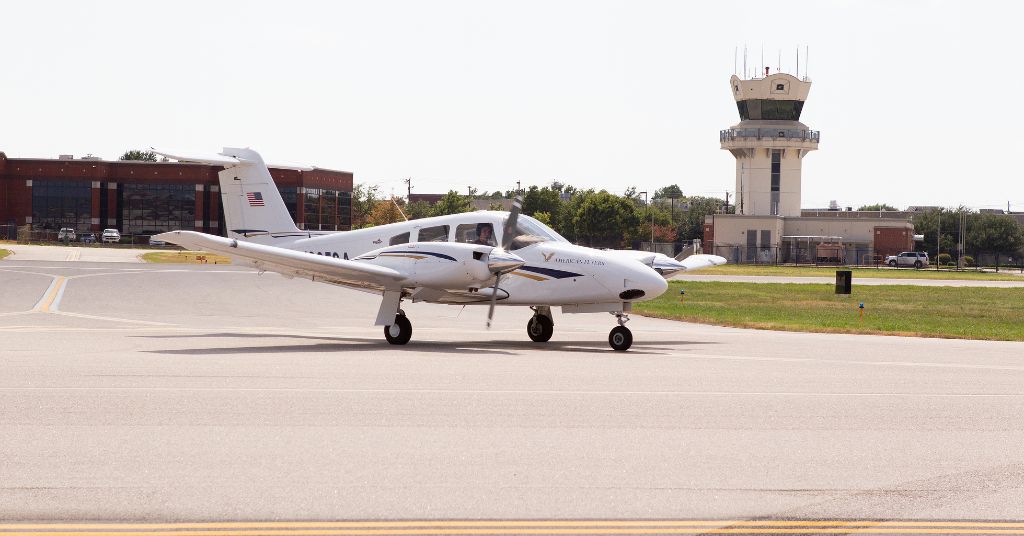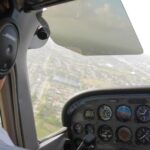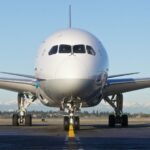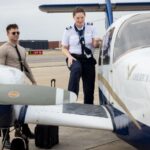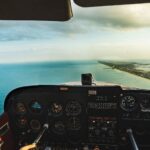The airspace in the United States is the most complex in the world. There are anywhere between 8,000 and 13,000 aircraft in the air at any given time in the United States. Yes, close to 100,000 flights take off and land in the U.S. on any given day. In this article, we hope to shed some light on how all of this chaos is controlled.
Air Route Traffic Control Centers
An air route traffic control center (ARTCC) oversees the system of en route air traffic control radio communications that ensure the safe, expeditious movement of the aircraft operating on instrument flight rules (IFR) within the controlled airspace of the center. ARTCCs are the central authority for issuing IFR clearances and provide nationwide monitoring of each IFR flight.
This applies primarily to the en route phase of flight and includes weather information and other in-flight services. There are twenty-two ARTCCs in the contiguous United States, and each center contains between twenty and eighty sectors. Each sector’s size, shape, and altitude are determined by traffic flow, airway structure, and workload. Appropriate radar and communication sites are connected to the centers by microwave links and telephone lines.
The Code of Federal Regulations (CFR) requires a pilot in command under IFR in controlled airspace to continuously monitor an appropriate center or control frequency. When climbing after takeoff, an IFR flight is either in contact with a radar-equipped local departure control or, in some areas, an ARTCC facility. As a flight transitions to the en route phase, pilots typically expect a handoff from departure control to a center frequency if they are not already in contact with a center.
Terminal Radar Approach Control
Terminal Radar Approach Control (TRACON) controllers work in dimly lit radar rooms located within a control tower complex or in a separate building located on (or near) the airport it serves. Using radar scopes, these controllers typically work in an area of airspace with a fifty-mile radius and an altitude of up to 17,000 feet. This airspace is configured to provide service to a primary airport but may include other airports that are within fifty miles of the radar service area. Aircraft within this area are provided vectors to airports and around terrain and weather, as well as ensuring separation from other aircraft. Controllers in TRACONs determine the arrival sequence for the control tower’s designated airspace.
Air Traffic Control (ATC) Tower
Controllers in this type of facility manage aircraft operations on the ground and within specified airspace around an airport. The number of controllers in a tower varies depending on the size of the airport. Small general aviation airports typically have three or four controllers, while larger international airports can have up to fifteen controllers talking to aircraft, processing flight plans, and coordinating air traffic flow. Tower controllers manage the ground movement of aircraft around the airport and ensure appropriate spacing between aircraft taking off and landing. In addition, it is the responsibility of the control tower to determine the landing sequence of aircraft under its control. Tower controllers issue a variety of instructions to pilots, from how to enter a pattern for landing to how to depart the airport for their destination.
IFR Clearance
An IFR clearance is authorization by ATC for an aircraft to proceed under specified traffic conditions in controlled airspace. The purpose of this authorization is to prevent a collision between known aircraft. An IFR clearance contains specific information in the following order:
Clearance limit – The fix, point, or location to which an aircraft is cleared when issued an air traffic clearance.
Route – A defined path to the clearance limit.
Altitude – Usually, an initially assigned altitude for the departure area with a time or location to expect higher.
Remarks – In this latter part of an IFR clearance, you will receive a departure frequency and a discrete transponder code.
The Flight Plan
While not controlled by ATC, the flight plan is a critical tool that makes it easier for pilots to integrate their flight into the ATC system. This is not only true for IFR flights but VFR flights as well. A detailed and accurate flight plan helps the various controllers along the way determine the best way to plan ahead and integrate a given flight into the system without any confusion.
While the ATC system is designed to deal with contingencies and last-minute requests, it performs much smoother when all parties use it in the way that it was designed. The flight plan plays a significant role in this because it allows for strategic planning and minimal delays.
By understanding air traffic control and how it operates, pilots are able to fly to any airport in the United States at any time with consistent and reliable service. This is truly the greatest system on earth.




